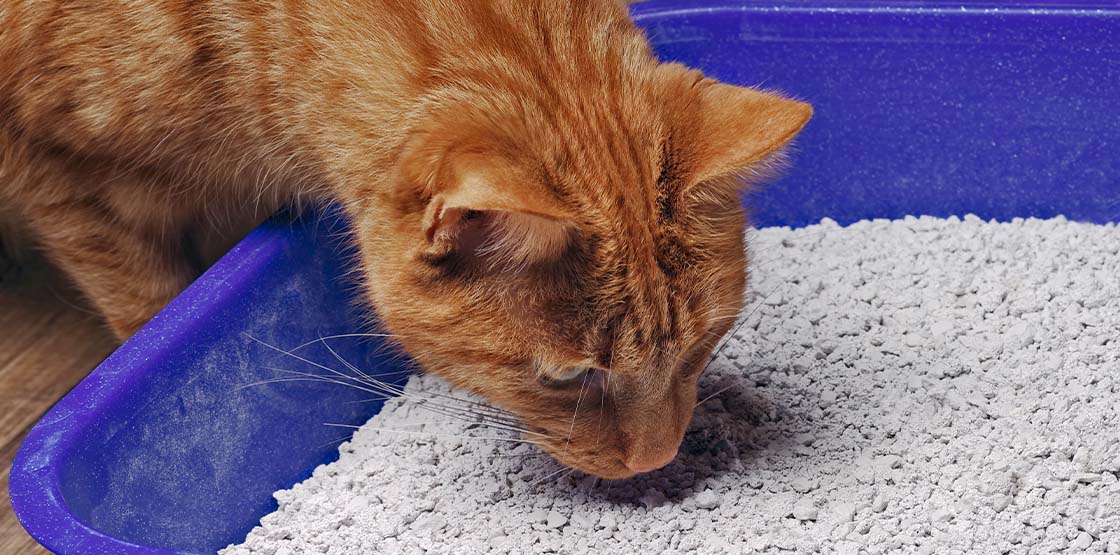How to Train a Cat to Use a Litter Box
For many cats, learning to use a litter box is instinctive, but that is not always the case. In addition, health issues can arise that cause your cat to shy away from using the litter box, so they might need to be retrained. If this is the case for you and your cat, we offer some tips as to how to train a cat to use a litter box.
Teaching Your Cat to Use a Litter Box
Purchase a Litter Box
First, you need to purchase a litter box and litter. It can also be helpful to get a mat for underneath the litter box to help collect stray pieces of litter or to protect your floor while you cat is learning to use the litter box. Keep in mind that very young cats and older cats often need a lower lip to make getting into and out of the box easier. The rule of thumb for the number of litter boxes is that you need at least one additional for every cat you have, so a household with two cats needs at least three litter boxes.
Choose the Type of Litter
Picking the type of litter can also be a matter of preference. Many cats do not like scented litters, so you should consider avoiding those. Litter that is sandier tends to be preferred by many cats and is the litter type closest to what they would use in the wild. Adding a little baking soda can help minimize odors.
Set Up Your Litter Box
When you set up your litter boxes, you will want to place them in quiet locations, where you cat can do their business without a fear of being disturbed. Keep in mind that if you place them in a location that is too out of the way, your cat may not continue to use them. If you live in a multi-story house, you should have at least one litter box on each level. If your cats have territories within the house, you need to ensure that each cat has ready access to a litter box. If they get bullied or blocked from using a convenient litter box, they are more likely to start inappropriately eliminating in different areas of the house.
Make the Litter Box Location Known
Make sure your cats know where the litter boxes are. You should show them the litter boxes so that they know where each one is located. You can also encourage your cats to use litter boxes by using cat attract litter or even pheromone products, such as Feliway.
You May Also Like:
Related Search Topics (Ads):
Keep the Litter Box Clean
One of the most important parts of litter box training your cat is to keep the litter box very clean. Cats tend to be neat naturally and many cats will stop using a litter box if the urine and feces begins to build up. In addition to scooping the litter box daily, you should disinfect the litter box and replace the litter regularly. Washing the pan with hot, soapy water will help keep germs from building up and can help control the smells that emanate from your cat's litter box.
What to Do When You Have Litter Box Issues
Maintain Regular Cleaning
If your cat is having issues using the litter box, you can start by troubleshooting the problem. Make sure you are cleaning the litter box regularly, as some cats like them scooped as soon as they go, so you may consider scooping them morning and evening.
Switch Up the Type of Litter
You can offer your cat several litter options and see which they prefer as a substrate. Keep in mind that your cat's nose is more sensitive than yours and they might turn their nose up at heavily scented litters. Clay litter and crystal litter may also get stuck in their paws and discourage them from using the litter box.
Get a Box With a Lower Lip
If your cat is urinating or defecating right outside of the litter box, it may be uncomfortable for them to use the box. Consider a box with a lower lip. Some cats also prefer to use an enclosed box for privacy, but most cats tend to prefer their box to be open so they can keep an eye on their surroundings.
Talk to Your Veterinarian
If your cat is continuing to have issues using the litter box, schedule them an appointment with their veterinarian. They may have health issues such as a urinary tract infection or even a urinary blockage. Constipation can cause them discomfort when they go to use the box and arthritis can make using litter boxes very painful. Your veterinarian will likely want to perform diagnostic tests such as a urinalysis, in addition to a thorough physical exam.
In Summary
Keep in mind that with very young kittens, you will need to stimulate them to eliminate much like their momma cat will do. Once your cat has learned to use a litter box, you can look into options such as teaching them to use the toilet, minimizing the mess that you need to clean up. In the meantime, keep the litter box clean and ensure there is not competition between cats in the household for litter box resources, which can lead to your cat not using a litter box.

